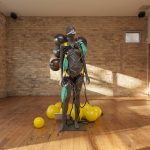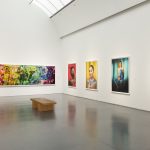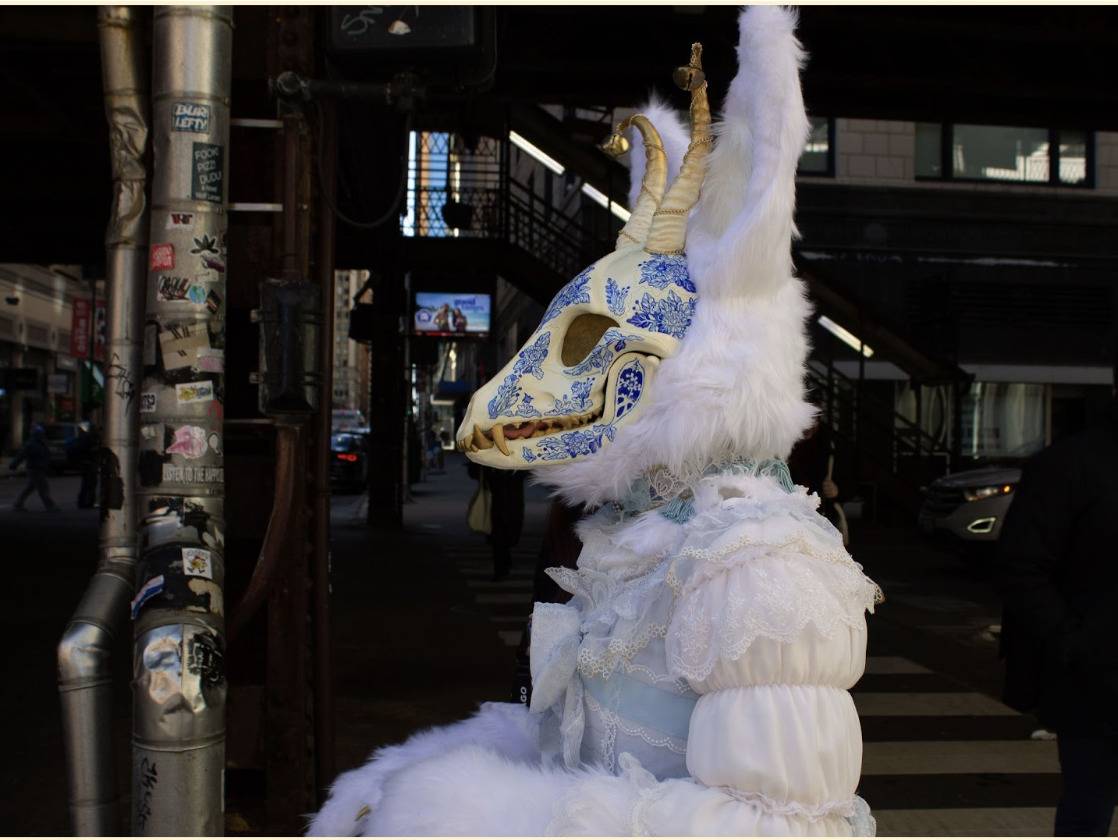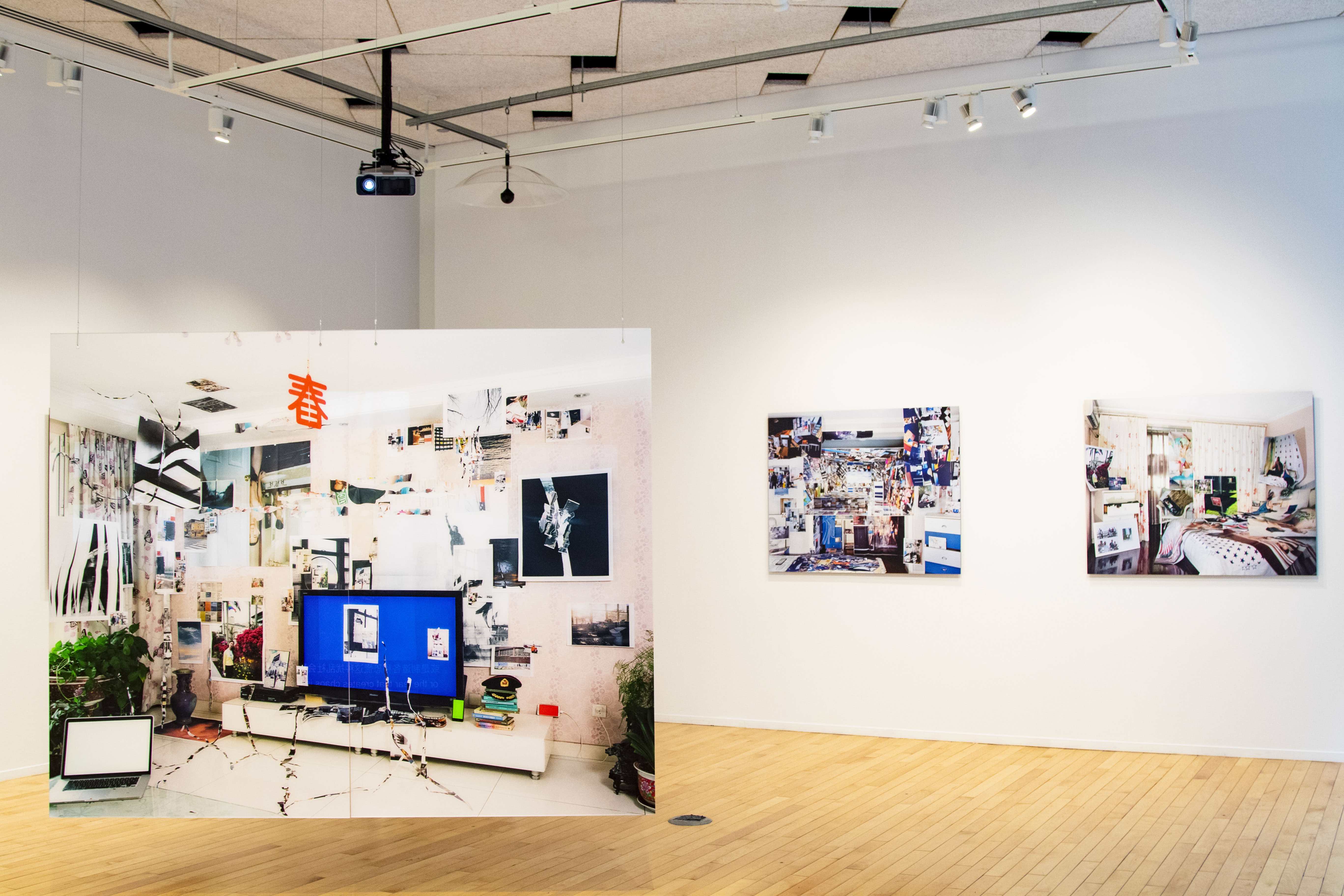
Installation shot of Guanyu Xu’s “Parallel Journeys” at SITE Sharp. Photograph by Jennifer Gillenwater.
Writing reviews for artists from my own culture in the United States bothers me slightly.
Suddenly becoming a minority in a foreign metropolis, detached from a collectivist environment, a Chinese artist may alter their way of performing identity to fit into a transcultural context. And sometimes I feel awkward when my compatriot communicates better with people from other cultures.
My friend recommended that I write about School of the Art Institute of Chicago (SAIC) student Xu Guanyu’s recent exhibition, “Parallel Journeys.” She exclaimed that his projects are “touching.” But what if I was not touched? Immediately, anxiety seized me. I recalled that Xu (Department of Photography, MFA 2019) had a good reputation among Chinese international students at SAIC. Someone had commented to me that his work was “awesome.” For a critic, if there is anything more uncomfortable than reviewing an artist friend, then it is critiquing an artist who is popular in your own community.
With a feeling of trepidation, I stepped into the reception for “Parallel Journeys,” which was held in SAIC’s SITE Sharp Gallery earlier this spring. Like a transparent closet, the space’s wall-sized windows facing out onto the street, exposing Xu’s video installation and 17 photographs in various sizes.
Xu’s photography critiques the invisibility of Asian gay representation throughout his transcultural experiences. In China, social taboo prevents the open discussion of sexuality, while in the United States, the dominance of white gay men within queer communities also affects the visibility of Asian body.
At the gallery entrance, where the title would be, is the photo “Two Locations,” which shows Xu and a white man pointing at two different spots on a map of Philadelphia as though playing a game. In the mellow light, their bare backs face the camera, suggesting an intimate, curious mood. In this image, as in the rest of the show, Xu adopts a personal yet confident tone to talk about his underrepresented Chinese queer identity in the United States.
Many of Xu’s other photographs are crammed full of disparate visual elements. At the center of the exhibition space, two large images hang from the ceiling at a diagonal. “The Dining Room” looks harmonious and dazzling in its horizontal composition. A cheap chandelier in plastic buttercup yellow in the top middle underscores its warm hue. Behind it, “The Living Room” looks much cooler, with a blue-screened television in the middle. A television built into a closet and scattered photocopies on the wall slant towards the audience, creating more tension. A weird decoration, a red lamp in the shape of the Chinese character for “spring,” exaggerates the imbalance in the image. Besides these two, six larger photos in the show also show similarly messy interiors. They belong to Xu’s project, “Temporarily Censored Home.”

Installation shot of Guanyu Xu’s “Parallel Journeys” at SITE Sharp. Photograph by Jennifer Gillenwater.
Xu shot these pictures in the house he lived in as a teenager. Different-sized copies of his previous photos flood the spaces, some interacting with the domestic interiors under his meticulous arrangement. Tender photocopies of foreign landscapes and male nudes are juxtaposed with the cold, hard symbols of Chinese authority, like a statue of Chairman Mao or an army cap. In the background, the floral curtains and wallpapers and the white doors and floors create a soft yet bright environment. Dark green plants in the corners or crude folk decorations interrupt these scenes, but leave them undisturbed.
The traces of family life reconstruct the space of the artist’s teenage memory. When Xu revisits these spaces, new memories from strange lands rush in in the form of photocopies. The photos are not tangible, three dimensional objects; like the evidence of absences, these photos from elsewhere imply Xu’s long time away from home. And even though he is physically present in the house to shoot this series, his corporal body does not show up in the images (except in “Space of Mutation,” in which half of his arm reaches out from behind a door). Like a ghost, the reproduced image of his body seem to reinforce his disconnection with the heterosexual space of his teenage family.
No doubt that Xu did a great job. Xu carefully inserted his sensitive personality into his pictures. He carefully balanced a serious social topic with his personal memories. His images are embedded with a slight playfulness, as well as a confidence of managing photographic techniques. No doubt that he is ambitious about creating gallery or biennale-level pieces. His work has an aesthetic that most institutionally successful photographers share: It’s smooth, flashy, and high resolution. Their composition is sophisticated, and it’s incredible how Xu grants an artistic aura to mundane objects. Besides, he even brings art historical reference; his “Display Window” reminds my photographer friend of Steven Shore’s photograph of a display window “Slot Car Raceway.” I understood that Xu is fluent in the language of contemporary photography.
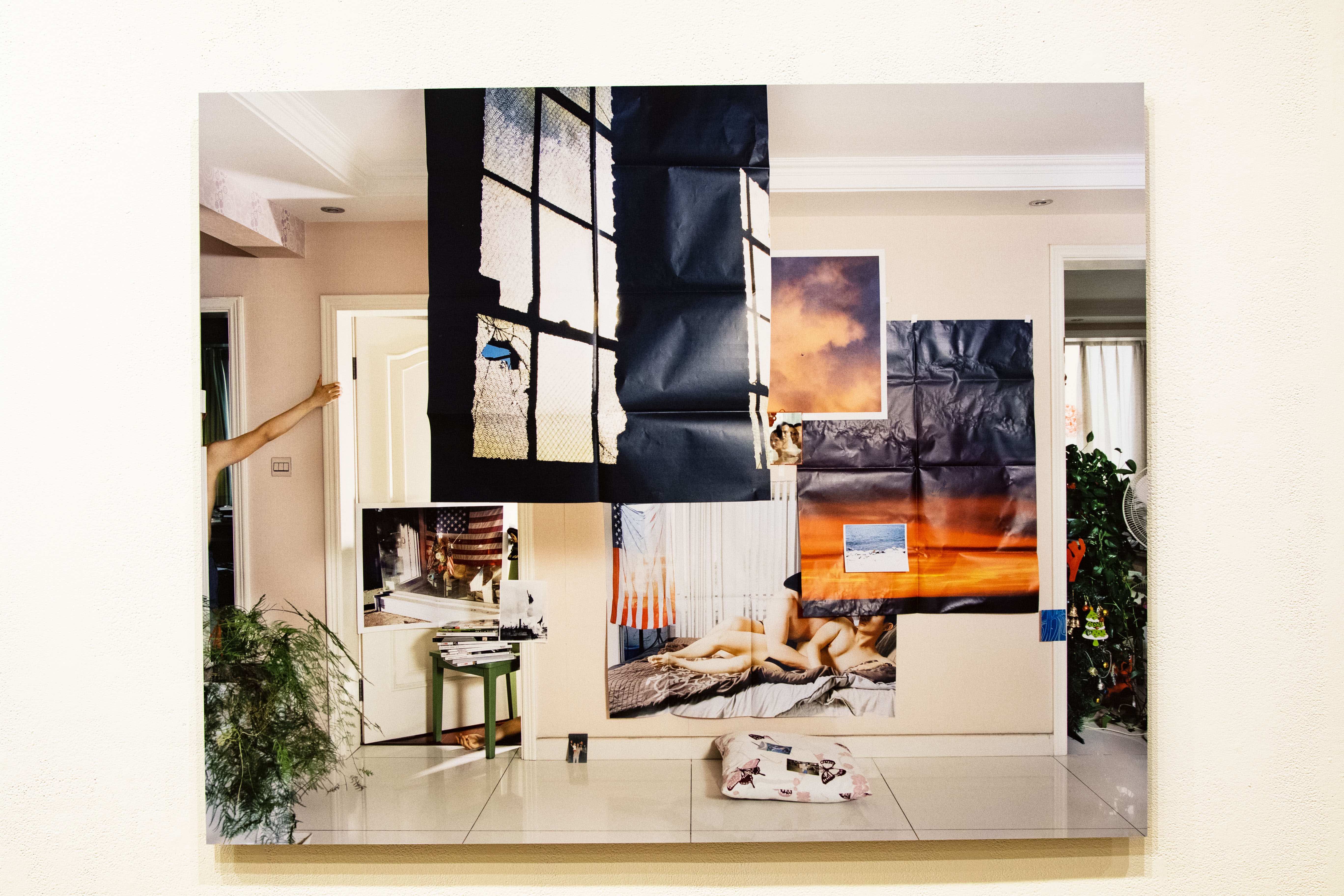
Installation shot of Guanyu Xu’s “Parallel Journeys” at SITE Sharp. Photograph by Jennifer Gillenwater.
I feel anxious that I cannot say no to Xu’s work. He would conquer any persnickety critic. If I have to be demanding, I have to say that the work on view requires more lights the in gallery space, better print effects, and bigger print sizes. The powerful visual effect of his pictures are limited by the small scale of the gallery. I would say his work looks better on a screen than in this space, where it fits his clinical aesthetic.
However, I would rather say that Xu’s work is not touching. Or maybe he is so devoted to the visual impact of his pictures that his personal emotions turn out to be still and serious. Like looking at many photographic masterpieces, I first feel isolated, then sorry for not loving them. As someone who has had similar experiences to Xu, I realize the difficult journey of claiming rights for LGBTQ people in China. Although I cannot empathize with his pictures, I appreciate Xu’s dignity to carry on.
Xu’s journey reminds me of a recent Chinese science fiction movie, “The Wandering Earth.” In the story, people have to choose between staying in a homeland in crisis and seeking shelters in outer space. The author always believed that humans should leave homeland forever, taking risk to survive by all means, even in a small wandering spaceship. But he also feels confusion: If a culture is detached from its homeland for too long and by too much distance, can it still be regarded as a part of its home culture? Like the image of a hand reaching out from inside a room where someone lies hidden, I think Xu, like a wandering spaceship of hope, has an optimistic answer.

